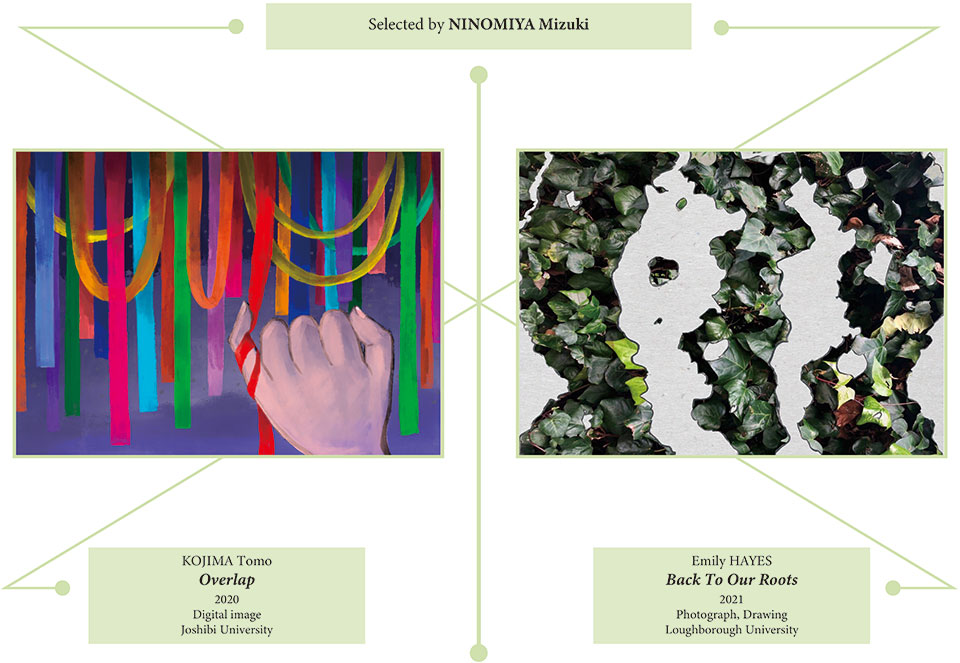Panel six - Selected by Mizuki NINOMIYA

Curator Comment by Mizuki NINOMIYA about “Overlap” by Tomo KOJIMA
The word "connections" has many meanings. Among them, the creator focused on and chose "people-to-people relationships" as the theme of her work.
Colorful ribbons are depicted in the picture. It is as if various emotions such as joy, surprise, anger, and sadness are expressed by colors, and it seems that they are intricately intertwined. The bright colors of the ribbons are accentuated on the dark background.
The artist says, “We communicate with others through wishes, prayers, and emotions. By praying over and over again, people and others are strongly connected”.
We humans not only have emotions, but also have the ability to express them and convey them to others. We can connect with people because we can share things in that way. It is exactly as the title “Overlap” says, each other's emotions overlap.
The work gives us a sense of how we are "connected" because we are human.
Now that we have to avoid meeting people because of COVID-19, what can we do to connect with people? Maybe this is an opportunity to think about such things.The message of "connections" by the artist through this work gave me a very warm feeling.
Curator Comment by Mizuki NINOMIYA about “Back to Our Roots” by Emily HAYES
COVID-19 has spread all over the world, and we now live a blockaded life. The "connection" expressed by Emily HAYES is an increase in the connection with nature that has grown in this environment.
However, her expression of "connection with nature" does not mean that plants and humans come into contact with each other on a greater scale. So what did her work express? In response to my question, she says, ''I focused on finding places where nature had grown back in places it shouldn’t; vines growing up walls and grass growing between the cracks of the pavement.''
The connection with nature that she expresses is just like the vines used in this postcard motif, slowly creeping up.
A plant that grows quietly through the gaps in the white background. It's as if it makes you realize the connection with plants that you didn't pay much attention to in your daily life, and the existence that is surprisingly close to you.
The words she said, "grown back in places" made a very deep impression on me.
She says she wants to use this work to convey the message "I think in many ways we have been taking nature for granted and that now more than ever it is so important to get outside in the fresh air during these unprecedented times."
I'm glad to encounter a work that shows what is important in everyday life that has changed significantly and she who noticed it and sent it out to many people.